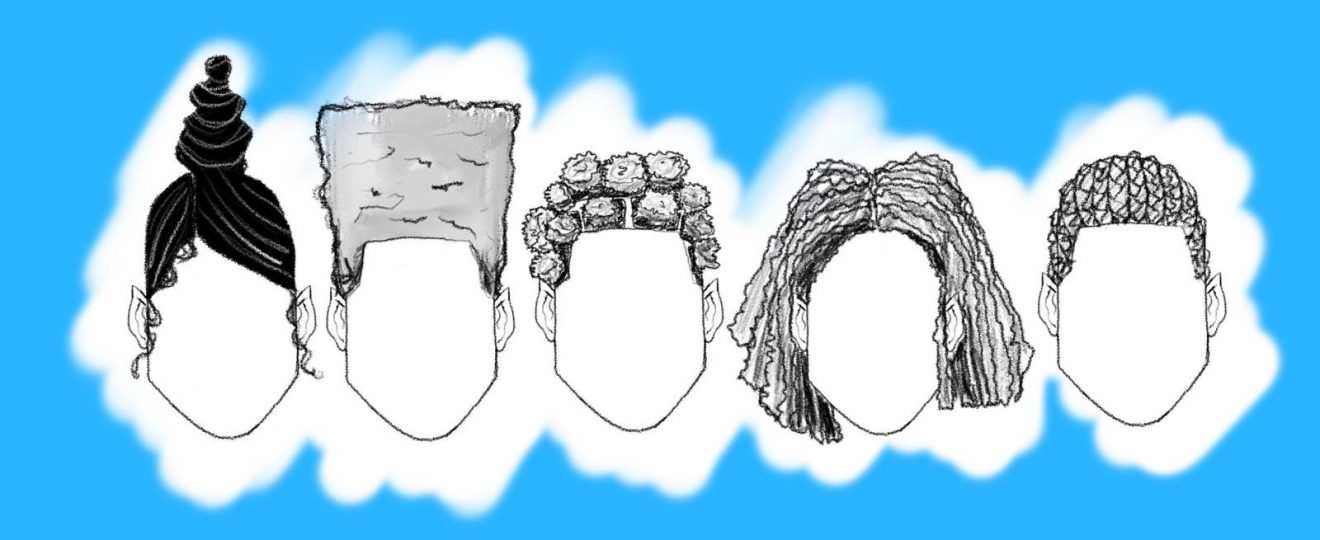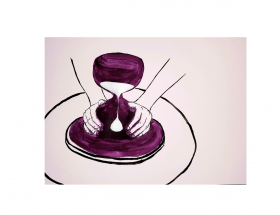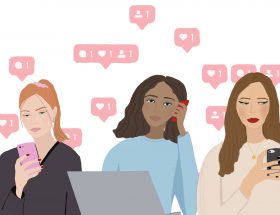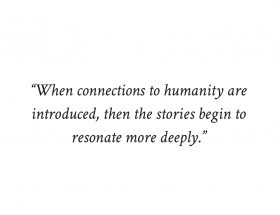A piece on politics, soft power, appropriation and braids, and how Africa can better leverage her cultural assets to maximise socio-economic returns.
It starts with one, a single head of hair; clouds of coils or buoyant curls, straight tresses falling slowly over the eyes, still warm from the blow-dryer, prepped and patiently waiting for deft fingers. The setting is anywhere; a salon, a sitting-room. The stylist is poised over the client, a thick swab of pomade on the back of one hand and a rat-tail comb in the other. The air feels cool on the scalp as the tail cuts through the hair. Measuring each section by eye and experience, the stylist smooths down the hair on either side to reveal the clean parting. She swipes a finger over the pomade, along the parting and through the hair before creating more sections. Starting from the hairline, she lightly pinches the strands at the front of the section in preparation, and begins weaving her way backwards, up along the crown and down to the nape of the neck. Her hands fly down the length of the braid; one done. They are small but she is fast. There is a steady swishing sound as the strands are rolled over and tucked under one another with near-mechanical speed, as line by line the hairstyle is completed.
The process of hair braiding described above is an ancient, intricate artform. Inherent to this practice is an understanding of not only the symmetry and shapes involved in the styles, but also of the heritage of African hair braiding. The skills are often handed down matrilineally but can also be picked up from apprenticeships, from friends or from careful observation as a braider works their magic on your own head. Since antiquity, braids have been used by the myriad ethnic groups on the African continent to communicate to the world details of the wearer’s identity, reinforce cultural ties and to afford the braider a sense of creative liberty and a chance to innovate with every client. In the hands of a braider, each head becomes a unique palette to be framed and flattered by their craft.
Yet braiding, and black hair by extension, cannot be divorced from the politicisation that black cultures* are subject to. Just as hairstyles are a form of self-expression and cultural shorthand, certain styles and hair textures have had negative connotations attached to them and their wearers. The sources of such stigmas can vary depending on the black culture or diaspora in question. On the African continent, the Eurocentric worldview that governed colonial life still has its grip on indigenous populations. One need not be told that these categorisations and caste systems are racist and inherently dehumanising. Instead of adding richness and colour to our understanding of a person, they pervert the subtext of black hair to make it what defines a person completely, in a reductive dichotomy of “good” or “bad” hair. Like other forms of prejudice, this discriminatory indexing can be self-afflicted or imposed by society. It is an insidious practice that actively cripples efforts for unity or a sense of identity by distorting how one views themselves in relation to others of the same race. The system pits black people against one another depending on how “close” they are to the “ideal” of whiteness on an arbitrary eugenic spectrum. In the end everyone loses, except the non-black institutions and their beneficiaries who continue to rely on perpetuating feelings of subordination in order to maintain power and control.
These power constructs also manifest themselves in the appropriation of black cultures. The inherent commodification involved with appropriation not only divests of the elements of the culture being exploited of their original meanings, but it also takes care to scrub away traces of ownership and shirks due recognition. These elements are then absorbed into popular (Western) culture, which is then re-exported across the world via globalisation. The final “product”, selectively altered and “refined” to fit its new market, is offered at a steep premium, the profit from which only goes to the revisionist party. It forms an ironic cycle in which the element eventually makes its way back to the African countries from which they were pilfered, but as a slightly alien version of its former self. Dance steps, musical styles, and hair braiding are all examples of what I have dubbed “high-export, intangible resources”: “high-export” in the sense they are frequently and easily stolen due to not being a physical product. They are then exported without the consent of the owners and engender huge profits that said owners will never see.
However, this article aims to examine one of the major-but-also-intangible benefits of rightful cultural exportation, which is soft power. Soft power is a term for the indirect influence a country has on others, often through the controlled dissemination of their culture to the world and their encouragement of a favourable perception of themselves in global popular culture, affording them a sense of agency through their ubiquity. Hallyu (the Korean wave) is a contemporary example of highly effective soft power. In contrast to the appropriation described above, this time the distribution of an aspect of a culture is controlled by the originators: South Korean conglomerates are the ones directly meeting the global demand for elements of their culture. Therefore, the nation is able to do it on its own terms and ensure that it gets the profits and recognition for this cultural exportation.
With regards to hallyu, an important contributing factor is that there are established systems and intentional organisational efforts put in place to facilitate this exportation. As Euny Hong of Allure magazine explains in her 2020 article ‘How South Korea Became the Capital of Pop Culture’, there was an “all-encompassing, high-pressure push of all ‘soft’ industries at once: music, movies, makeup, food and fashion”; a government-backed, deliberate campaign to “brand” South Korea itself. Hong describes the “ecosystem” in which vertically-integrated entertainment companies are able to leverage the synergy of their subsidiaries to enhance the effectiveness of promotions for media and products.
Certainly, Korean popular culture has been shaped by globalisation and the inherent importation of cultural elements it entails, but the remarkability is in the resounding success and pervasiveness of the “final product”, which is both uniquely Korean and accessible for a global audience. That is not to say that cultures need to be passed through a Western filter in order to achieve global prevalence, but simply that phenomenon like hallyu have brought in billions of dollars by acknowledging the Westernised hand that the world has been dealt but then innovating it with the cross-fertilisation of indigenous culture and global pop culture. To that end, this article poses the question of whether a better understanding of soft power and a dedicated plan to develop it could be a way for African countries to reclaim their culture in a post-colonial world?
It is important to recognise that soft power alone will not fill gaps created by governmental mismanagement or the weakness of certain economic pillars. Hong clearly delineates the rise of South Korea from “one of the world’s poorest nations …[to] one of the richest” as a development with industrial foundations. Technological investments and the cooperation between the government and the private sector are just some of the economic approaches that happened to preface the soft power push; in Hong’s own words, the country went from “poor to rich to…cool”, the order of which is significant. She also takes care to emphasise that some of the factors that facilitated the push were specific to South Korea, as well as mentioning the “luck and hard work” involved. This article also takes a similar stance in not presenting the economic development of South Korea as a sort of blueprint to apply to developing nations and then expect similar results (which is another article in itself).
One conclusion this article does draw from Hong’s breakdown, however, is that certain imbalances need to be levelled in order to create a stable foundation for any soft power. In a nation like Nigeria (where the export of crude oil and its reimportation after being refined has essentially serviced other nation’s economies at a personal loss), this means changing how we approach exports and investing in diversifying our economy to wean it off of fossil fuel reliance. There needs to be a thriving, tangible “heavy” industry to fund the high quality of life required to truly benefit from any soft power. This heightened quality of life includes improvements to education and job prospects, which presents the population with the agency to choose what perspective one sees themselves with in relation to the wider world. Such an upheaval would widen access to the African intelligentsia and make it easier to uproot harmful, limiting mindsets. It also would encourage new ideas for wealth creation, innovation and sustainable progress.
Evidently, the proliferation of black cultural elements in global popular culture demonstrates that there is a demand. Although we may not be able to curtail its exploitative qualities, it may be possible to counter or respond to appropriation by taking charge of how our culture is commodified and accruing our due dividends. With consistent, focused branding and shrewd analysis of the markets to be targeted, African countries can one day leverage the many cultural bases they already possess and synthesise commodified versions that will have global appeal. As with black hair, there is power in taking control of the narrative surrounding your culture and how you want that facet of your identity to be consumed. The future of the continent will likely be determined by those who want to do just that.
*To more accurately reflect the plurality of the distinct cultures that exist in the Caribbean, the African diaspora and on the African continent, this article will refer to “black cultures” rather than the phrase’s singular form.
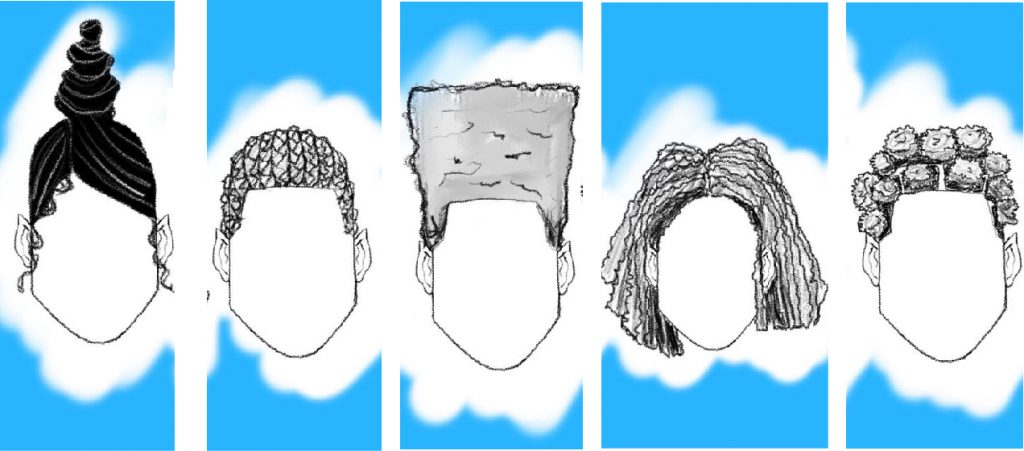
Art by Desiree Finlayson

